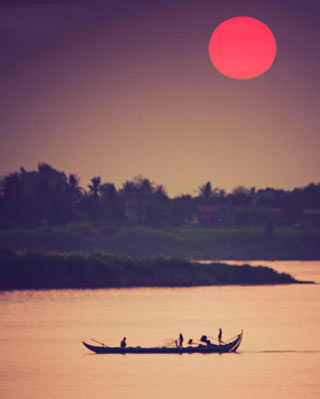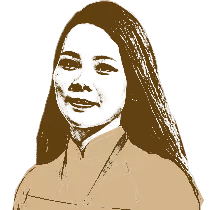Mekong River Cruise Experience: Exploration of Cao Dai Religion
Originated in Vietnam in the 1920s, Cao Dai is a relatively new, syncretic religious movement combining aspects of Confucianism, Taoism, Buddhism, Christianity, and local folk traditions. Despite its early roots, it has grown in popularity, particularly on the Lower Mekong in the south, where it was developed, and has become one of Vietnam's most religiously accepted customs. In this article, we will explore some details of this unique religion.
-ori.jpg)
Origin and History
Cao Dai, also known as Caodaism, was established in 1926 by Ngo Van Chieu, an administrator for the French in Indochina. According to Cao Dai beliefs, Chieu received supernatural revelations during a table-moving séance in 1919, calling him to start a new religion that would unite all faiths and lead humanity to enlightenment. After a time of study and meditation, he declared the establishment of Cao Dai (literally meaning “High Tower”), combining his visions with parts of existing religions, such as Taoism, Buddhism, Confucianism, and Roman Catholicism.

Beliefs and Teachings
Cao Dai encompasses a wide variety of religious beliefs and philosophical concepts. The core of its teachings is the belief in one Supreme Being, known as the “Cao Dai” or the “Highest Lord.” This supreme god is seen as the originator of the universe and all elements of existence. Followers of this religious movement also recognize the existence of divine intermediaries, and its pantheon of saints includes the Buddha, Confucius, Jesus Christ, and Muhammad, along with a pope, cardinals, and archbishops. Ultimately, the faith emphasizes nonviolence, vegetarianism, and the values of love, justice, and righteousness. Worshipers are encouraged to meditate, pray, and self-cultivate to achieve spiritual enlightenment and harmony with the divine.

In Cao Dai religion, God is distinctively symbolized as an eye in a triangle encircled by rays of light, known as the Divine Eye or the all-seeing eye of the Supreme Being. It represents God’s divine presence, omniscience, and watchful gaze on the universe. This symbol often appears on the facades of the sect’s temples.
Influence and Recognition
In 1943, when Japan was occupying Indochina, the Cao Dai army was founded. Following the war, the Cao Dai exerted significant influence in domestic politics. Former Vietnamese President Ngo Dinh Diem and his family are among the noteworthy believers, as are other high-ranking government officials and military figures during the Vietnam War era.
Despite its relatively brief history, the Cao Dai religion maintains a sizable following in Vietnam and outside the country’s borders, including in the United States, France, Cambodia, and Australia, where Vietnamese diaspora communities live. Its global outreach has helped raise awareness and comprehension of this distinctive religious movement.

The Cao Dai faith's distinctive combination of Eastern and Western beliefs, along with its emphasis on universal peace and spiritual enlightenment, has piqued the interest of many seekers worldwide. Its vibrant temples, intricate ceremonies, and syncretic teachings continue to captivate researchers, travelers, and anyone interested in discovering the rich tapestry of religious variety.
Temples and Spiritual Centers
Cao Dai temples, or "Holy Sees," are largely located throughout Vietnam, notably in the south. Tay Ninh is the seat of the sect, and the Tay Ninh Holy See is the most well-known Cao Dai temple. It is the religion's administrative center and a popular destination for pilgrims and visitors. Cao Dai temple architecture is a remarkable combination of Eastern and Western styles that represent the religion's syncretic character.

Discovery of the Cao Dai religion during a Mekong River cruise
Travelers will see many Cao Dai temples in the southern region of Vietnam. For cruising passengers who feel interested in learning more about this faith, they can choose a 3-, 4-, or 7-night river cruise trip sailing between Vietnam and Cambodia on one of the two beautiful ships of Heritage Line, The Jahan and Jayavarman Cruise. The cruise line can schedule a private meeting with a priest at the Tan Chau temple to get insight into this unique Mekong culture.

Cao Dai is an amazing example of how spiritual synthesis and innovation may be achieved by humans. It presents an enticing blend of religious traditions, empowering followers to pursue enlightenment on a spiritual level and embrace the mixture of human religious experiences. If you're planning to take a Mekong River cruise with a visit to a Cao Dai temple, feel free to contact our travel consultants for suitable options and great deals.
















